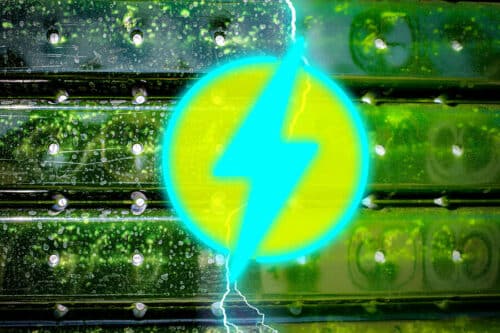The researchers have developed a low-cost technology to reduce fouling in photobioreactors, facilitating the effective conversion of greenhouse gas into valuable products.

Algae cultivated in transparent tanks or tubes with a supply of carbon dioxide can transform greenhouse gas into other valuable compounds such as food supplements or fuels. However, this procedure results in algae accumulation on the surfaces, reducing efficiency and needing frequent labor-intensive cleaning.
MIT researchers have devised cheap technology to curb fouling, enabling efficient greenhouse gas conversion into valuable products. The charge-holding coating on transparent containers, with low voltage, could limit fouling. Successful lab tests show potential for commercial application in a few years. Even if emissions are reduced, greenhouse gasses will linger for centuries. Negative emissions technologies are needed to remove them from the air/oceans or prevent release from sources. Biological methods for reducing CO2 usually involve trees, but marine algae absorb 50% of global CO2 and grow 10 to 50 times faster than land-based plants.
Algae are nutrient-rich and can produce more nutrition per unit of land than some crops. Algae attached to power plant flue gas can consume CO2, nitrogen, and sulfur oxides. Microalgae species produce 1 kg per 2-3 kg CO2 and can be used for biofuels, Omega-3 or food. Omega-3 fatty acids are a high-value food supplement that cannot be produced by the body and must be obtained from food. Commercial algae growth mainly occurs in ponds or transparent photobioreactor tubes. Though the latter can yield seven to ten times more per unit of land, frequent cleaning due to buildup on transparent surfaces hampers productivity and incurs operating costs. Fouling limits system design; tubes can’t be too small.
The team used algae cells’ natural negative electric charge on their membrane surface to prevent fouling. To push algae cells away from vessel walls, a high-performance dielectric material with a high permittivity is needed to create an electric field. Previous attempts to apply voltage to bioreactors used conductive surfaces. Still, the team have used non-conductive surfaces to achieve pure electrostatic repulsion, creating a force field that prevents the algae from touching and being shocked by the surface. Two dielectric materials, glass and hafnia, proved more effective in reducing fouling than traditional plastics. A very thin coating of 10 to 20 nanometers would suffice to cover the entire system.
The system could attract or repel cells by reversing voltage for applications, such as using human cells to build artificial organs. This study solves biofouling bottlenecks for photobioreactors.
Reference : Victor J. Leon et al, Externally Tunable, Low Power Electrostatic Control of Cell Adhesion with Nanometric High‐k Dielectric Films, Advanced Functional Materials (2023). DOI: 10.1002/adfm.202300732






